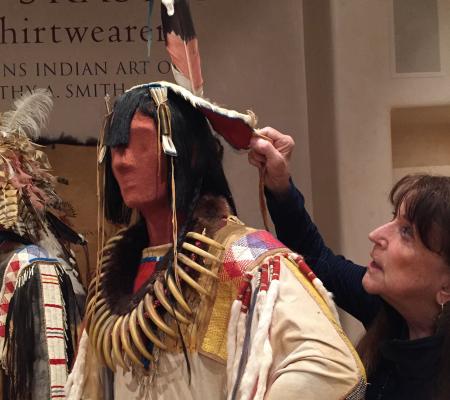In Native North American artistic traditions, what is a replica? What constitutes a copy? As the art historical study of Native art comes of age, there is a need to grapple with issues of forgery and misattribution, as well as issues visiting scholar Dr. Janet Berlo calls “vexed identities”. In contrast to the larger field of art history, there is almost no literature on these topics. Berlo’s forthcoming publication, Not Native American Art: Falsifications, Misrepresentations, and Vexed Identities, will be the first to investigate the topic in depth. Berlo’s lecture at The University of Texas at Austin, adapted from the book’s introduction, considers various notions such as prime objects, replicas, copies, tributes, forgeries, homages, pastiches, and even digital surrogates as they apply to archaeological, historical and contemporary Native arts of North America.
Janet Catherine Berlo, professor of Art History and Visual and Cultural Studies at the University of Rochester, holds a Ph.D. in History of Art from Yale University. Among her many books are Native North American Art with Ruth B. Phillips (Oxford, 1998, 2015), American Encounters with Angela Miller, Bryan Wolf and Jennifer Roberts (Pearson/Prentice Hall, 2007), Plains Indian Drawings 1865-1935 (Abrams, 1996) and Spirit Beings and Sun Dancers: Black Hawk’s Vision of a Lakota World (Braziller Books, 2000). She has taught Native American art history as a visiting professor at Harvard and Yale, and was a Guggenheim Fellow in 1999. In Spring 2017, she was Senior Scholar in Residence at the Georgia O’Keeffe Research Center in Santa Fe, where she worked on her current book manuscript, Not Native American Art: Falsifications, Misrepresentations, and Vexed Identities.


